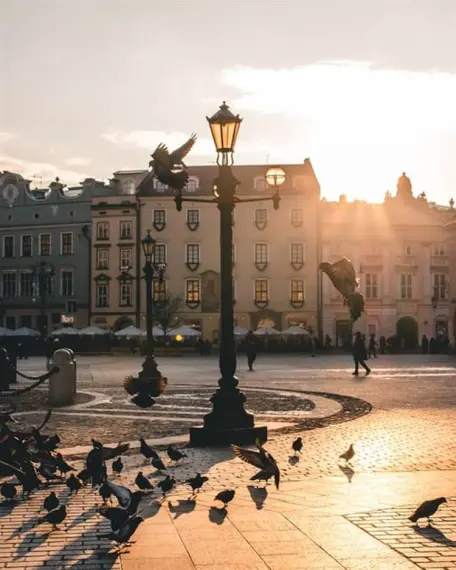Biecz - Polish Carcassonne - Buses to and from Biecz
BIECZ

Biecz - Pearl of Malopolska
According to the opinion of many people specializing in sightseeing tours, Biecz is one of the most underrated tourist destinations in our country. This inconspicuous town of less than 5,000 inhabitants lies in the Malopolska province and is the seat of the urban-rural municipality of Biecz. It is one of the oldest towns in the region. Biecz is located in the Carpathian Foothills, on the Ropa River. Due to its medieval buildings, it is sometimes referred to as the Polish Carcassonne. The town is filled to the brim with monuments, and it's best to start visiting them from the tourist information center located at the Market Square.
Polish Carcassonne - noteworthy sights
This is an ideal place for those who want to see as much as possible on a relatively short time. In the midst of the city's medieval defensive fortification, you can admire the Corpus Christi Church, which is among the most valuable religious buildings in Poland. Every tourist will inevitably come across the Market Square, where you will find, among other things, the City Hall - originally Gothic, with time partially rebuilt in the classicist style. Its 57-meter tower stands out significantly from the city skyline. In the close vicinity of the City Hall, some interesting to the eye townhouses have been built. One of them houses the Biecka Land Museum, which presents the history of Biec and the region's inhabitants. Other monuments, without which a visit to the Pearl of Malopolska cannot be complete, include the Franciscan monastery from 1624, the Holy Spirit Hospital, the former synagogue, the defensive fortifications, the Old Town castle, the railroad station and the house of the robber Becz.
Other noteworthy sites lie outside the Biecz area. It is certainly worth the extra mile to visit: The Museum of Petroleum Industry and Ethnography in Libuša, the Church of St. Michael the Archangel in Binarowa, a UNESCO World Heritage Site, and the wooden church in Rožnovice.
Biecz is a city with an impressive and colorful history. Not everyone knows that the saying "dissolved like a grandfather's whip" comes from this very name. Its explanation is as follows. In the Middle Ages, local residents were overflowing with affluence to such an extent that even local beggars were not content with mere alms. They owed their prosperity to, among other things, the trade routes running through their town. And where there was trade, there were also robbers and types from under the dark star. The problem of robbery at one point grew to such an extent that the army and courts could not keep up with tracking down, catching and trying the thugs. Therefore, the king granted Biecz a sword law allowing a specially appointed executioner to carry out the death penalty. The executioner, known as the "master of holy justice," Biecz's rulers, probably for a fee, lent to neighboring towns.
Polish Carcassonne - accommodation and catering facilities
Biecz, although small, has an infrastructure ready to receive visitors. Recommended facilities include the "Grodzka" hotel and restaurant, the "Mimoza" hotel and restaurant, the school youth hostel, the "u Becz" restaurant and cafe, the "Villa Historia" guest rooms, the "Wczasy pod gruszą" resort, Jolinkowo agritourism farm, agritourism at Tadek's and agritourism New Life in Beskid.
Buses to and from Biecz
Buses Sindbad stop in Biecz at the BP gas station at 106 Zalawa Street, from where you can easily start your sightseeing tour on foot. You are welcome to board our buses!
Are you interested in the city description? Check out the details of connections to Biecz from your town in the search engine onstronie głównej.
BIECZ - list of coach stops:
- Stacja paliw BP, ul. Załawie 106
SINDBAD coach stop:
BIECZ - list of international connections:
© 2025 Sindbad
Technical support, assistance, payments: Sindbad IT
© 2025 Sindbad
Technical support, assistance, payments: Sindbad IT
